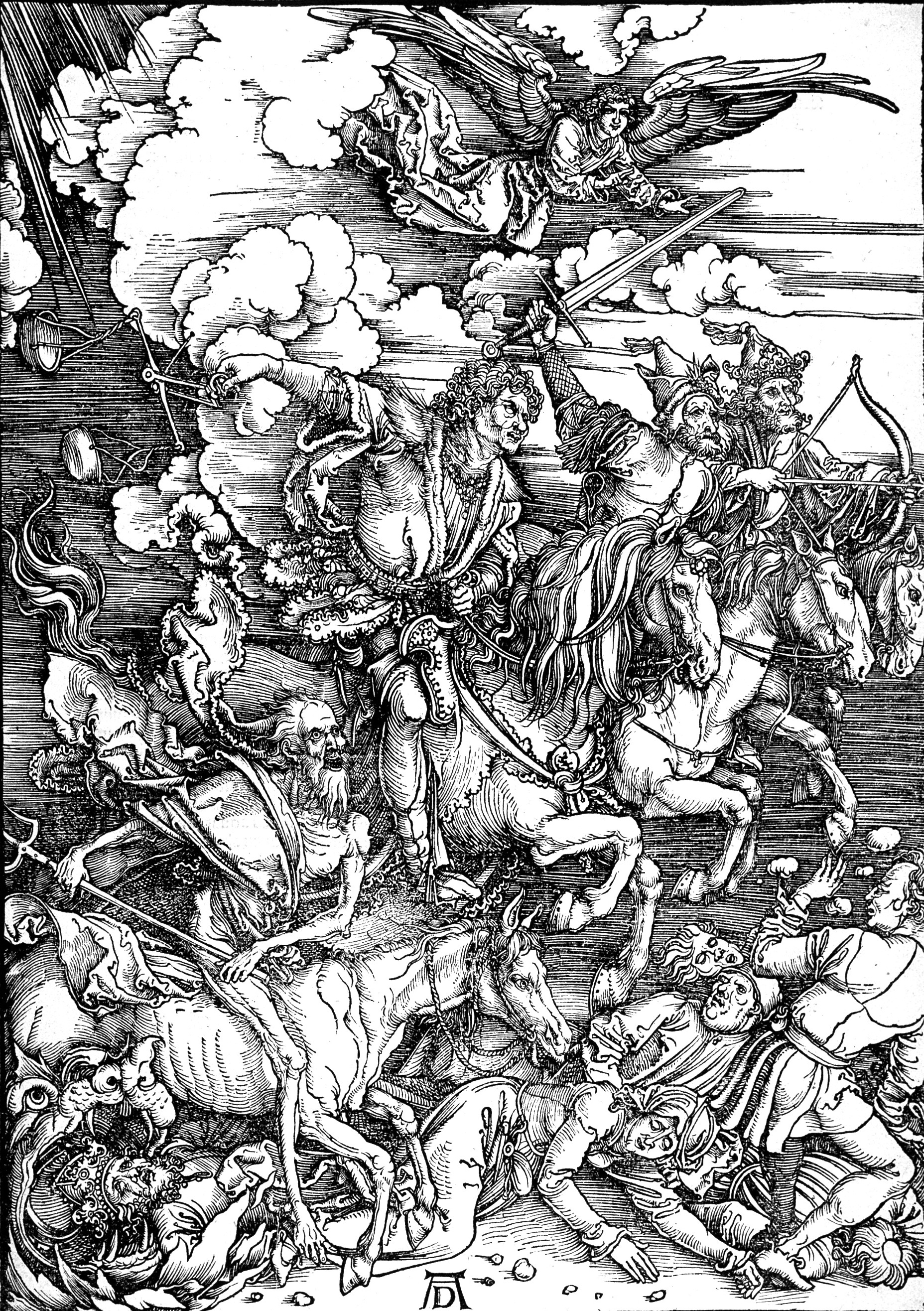Learn about this amazing GERMAN artist that was considered the Leonardo da Vinci of the North! Go Deutschland futbol!
Watch my video here:
Albrecht Dürer was most of the most prolific and influential German artists of the High Renaissance. While Raphael, Michelangelo, and Leonardo were blowing up Italy with their stunning creations, Dürer was redefining art in the North. He was born in 1471 in Nuremberg, a town now famous for the Nazi trials that took place there after WWII. However, in Dürer's time, the town was part of the Holy Roman Empire. Dürer was a genius and wrote books relating to geometry, human proportions, and art in the natural world. The way he depicted images was so lifelike and precise that his paintings perfectly reflected Alberti’s adage, “a window on the world.” He married in 1494 and worked as an apprentice for an engraver. Perhaps this early exposure to this medium explains why Dürer was such a gifted engraver, woodcutter, and painter. His most famous works are his self portraits, woodcuts of the Apocalypse, and his scenes of nature.
This watercolor image was painted right before Dürer made his first visit to Italy, specifically Venice (the same city that El Greco went after leaving Crete). After leaving the mother country of the Renaissance and Roman influence, Dürer returned to Nuremberg and opened his own studio. His works also became more realistic, religious, and skilled. “The Wire-Drawing Mill” depicts a small town in Nuremberg as well as the local River Pegnitz. This town produced copper wire, explaining the necessity for the mill (it had to draw out/thin the wire). First, the high Northern Renaissance typically had realistic images, depictions of nature/peasant life, an affinity for Protestantism, a focus on the individual, and the idea of God suffering just like the common, everyday person. Dürer practically invented these guidelines, most of which are present in this watercolor. First, the houses/slice of peasant life are extremely naturalistic. The houses are typically “German” with dark wooden accents and roofs that come to a point. The River is so clear that the shadows of the overhanging wooden buildings are visible (see the black specks?) Besides the buildings in the foreground, the sprawling landscape depicted in varying shades of green is also quite striking. The trees are evenly spaced out and the buildings (most likely churches) fade into the background, indicating human control over nature. In the very back, the blue mountains loom menacingly, contrasting nicely with the green foliage below. Speaking of colors, the tones in the image are mostly muted (i.e. the subtle browns, beiges, greens, and blues). Dürer created this watercolor before he made the pilgrimage to Venice, a city that is famous for its skillful paintings with bright colors (i.e. those by Veronese, Titian, and Tintoretto).
 Besides the trees in the paintings being piercingly lifelike, the theme of humans being dwarfed by nature is evident as well. For example, glance at the human walking purposefully on the road or the one in the river—they are both faceless and just a speck in the landscape. This indicates humans’ relatively meager importance compared to nature and God. This image depicts the typical German town in the 1500s; it had some commercial business (i.e. the copper wires), but was still relatively small and controlled by a king. Dürer's work usually depicted religion and his move towards Protestantism, but these early works tend to leave religious symbols out. As per usual, Dürer (who died at age 56) signed his name in the top middle of the image with an AD.
Besides the trees in the paintings being piercingly lifelike, the theme of humans being dwarfed by nature is evident as well. For example, glance at the human walking purposefully on the road or the one in the river—they are both faceless and just a speck in the landscape. This indicates humans’ relatively meager importance compared to nature and God. This image depicts the typical German town in the 1500s; it had some commercial business (i.e. the copper wires), but was still relatively small and controlled by a king. Dürer's work usually depicted religion and his move towards Protestantism, but these early works tend to leave religious symbols out. As per usual, Dürer (who died at age 56) signed his name in the top middle of the image with an AD.
Sources:
http://www.wga.hu/frames-e.html?/html/d/durer/2/16/1/02mill.html
http://upload.wikimedia.org/wikipedia/commons/3/3f/Durer%2C_il_mulino.jpg
 |
| Four Horsemen of the Apocalypse Woodcuthttp://en.wikipedia.org/wiki/Apocalypse_(D%C3%BCrer) |

Sources:
http://www.wga.hu/frames-e.html?/html/d/durer/2/16/1/02mill.html
http://upload.wikimedia.org/wikipedia/commons/3/3f/Durer%2C_il_mulino.jpg

No comments:
Post a Comment